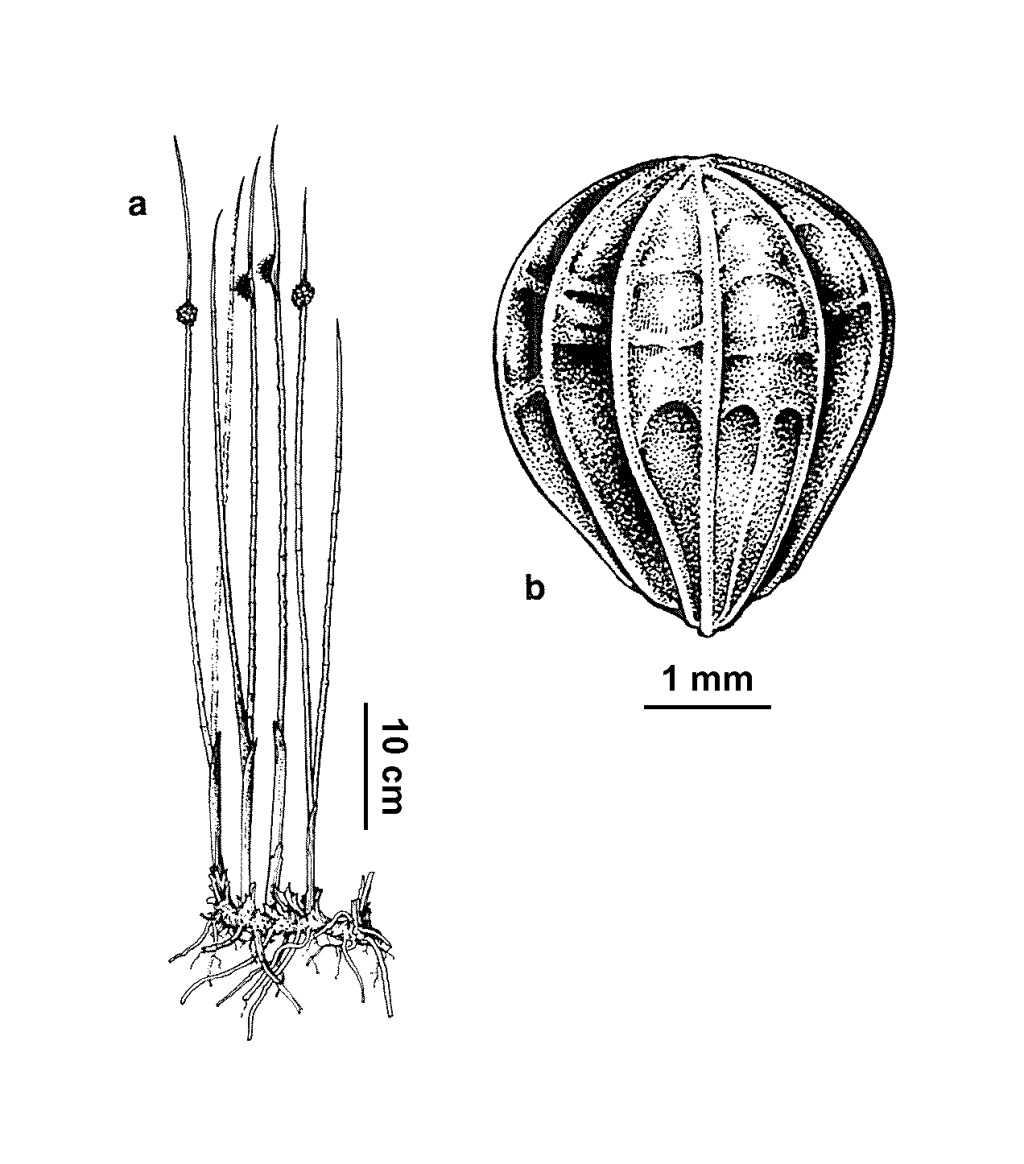Chorizandra australis
K.L.WilsonPerennial with tough rhizome. Culms 90–220 cm high, 4–9 mm diam., unitubular, sometimes pluritubular near base, transverse septa occasionally obvious externally near apex, yellow-green, longitudinally striate but not warty. Inner leaf-blades much shorter and more slender than culms, unitubular; sheaths loose, pale brown to purplish, to 38 cm long. Inflorescence globose to hemispherical, 10–18 mm diam., with numerous pseudospikelets; core globose to hemispherical. Involucral bract to 20 cm long, unitubular; base hyaline to yellow-chartaceous, not or occasionally slightly red-dotted, not enlarged or sheathing inflorescence. Pseudospikelets with 14–16 glumes, 8–13 stamens; glumes spathulate to ligulate, mostly ± keeled near apex, ± erose, dark red-brown towards apex, glabrous, 5.0–6.0 mm long; apex acute to obtuse, rather praemorse. Nut with 6–8 complete longitudinal ridges and fainter secondary longitudinal and transverse ridges, pale red-brown to grey-brown, 3–4.5 mm long, 2.0–2.7 mm diam. Flowers spring–summer.
Wim, GleP, VVP, GipP, OtP, WaP, CVU, GGr, DunT, EGL, EGU, WPro, HSF, Strz. Also Tas, SA. In swamps and around waterholes. Previously confused with C. cymbaria.
Wilson, K.L. (1994). Cyperaceae. In: Walsh, N.G.; Entwisle, T.J., Flora of Victoria Vol. 2, Ferns and Allied Plants, Conifers and Monocotyledons, pp. 238–356. Inkata Press, Melbourne.
 Spinning
Spinning
